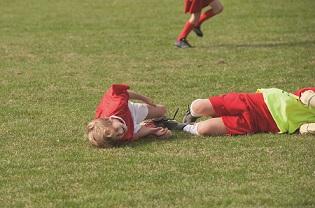

Purchasing appropriate coverage not only protects you and your organization from financial disaster; it may also provide needed liability coverage for bodily and property damage that occurs to participants, spectators and the facility owner and is often required by the facility. For example, if a spectator trips and is injured while attending your event or if the gymnasium floor is damaged during setup, liability coverage will cover the damages; purchasing liability coverage provides financial protection and peace of mind.
It is the scenarios involving ‘what if’ that make so many people uneasy. This is often because they are unfamiliar with the various types of insurance, what is needed, the amount to spend and so forth. While insurance language can sometimes be overwhelming, a few simple definitions of various types of coverage can give you an understanding of what may be covered under your policy. Since coverage varies depending on the company you choose, always be sure to read your coverage documents carefully so that you aren’t surprised by exclusions.
Commercial general liability insurance protects the insured against liability lawsuits or claims, from a third party, for bodily injury and property damage arising out of the insured’s premises and operations. Defending your organization against and paying for a liability claim is expensive. Liability insurance not only pays for damages you are held legally liable for, but should also cover the cost of investigation and defense of claims, even if they are groundless. Always ask your insurance provider if defense costs are outside of your limits of coverage; if they are included, legal costs may quickly burn through your coverage limits.
Commercial general liability may include:
Legal Liability to Participants protects against bodily injury liability claims brought by persons participating in covered sports activities. Professional liability provides protection for claims arising out of the rendering or failure to render instruction, demonstration, direction or advice relating to the sports activity.
Inland marine coverage, sometimes called equipment and contents coverage, provides coverage for direct loss or damage to sports equipment, field maintenance equipment, concession stand equipment and portable storage sheds.
Medical payments for participants coverage pays medical and dental expenses incurred by a participant when accidental injury occurs while participating in covered sports activities (this coverage is usually on an excess basis, after all other medical coverage available to the participant has been exhausted). This coverage may be included as a coverage offered within the general liability policy or as a separate participant accident policy; make sure to review coverage options to verify where (or if) this insurance is provided in your insurance quote.
Products-completed operations generally protects the organization from claims related to the manufacture or sale of products to the public. It may cover the seller's liability for losses or injuries to a buyer, user or bystander caused by a defect or malfunction of the product). One common area of concern for sports organizations is concession stands that carry the potential for food-related illness claims.
Personal and advertising injury (covers an injury to a third-party brought about by the insured business advertising its goods and services, usually by copyright or trademark infringement or due to libel, slander, or invasion of privacy).
In recent years, several developments have given rise to additional concerns, and sports event owners, planners and organizers have become increasingly aware of these. For example, sports organizations should also consider adding sexual abuse and molestation (SAM) coverage to their general liability coverage when purchasing insurance for their teams and events. Purchasing coverage specifically developed to protect sports organizations is important financial protection and provides liability coverage for sums the insured becomes legally obligated to pay as damages because of loss arising out of actual or threatened sexual abuse or molestation. This coverage is different from SAM defense cost reimbursement coverage, which simply pays for defense costs the covered organization incurs. Sexual abuse and molestation coverage is offered by some insurance providers when purchasing commercial general liability coverage, often as optional coverage.

If you are an event organizer, the venue/facility may require you to show proof of liability and to list them as an additional insured to your policy. An additional insured is an entity which has an insurable interest for claims arising out of your negligence as the named insured. A certificate of insurance is provided to the additional insured providing proof of coverage. This will protect you, the named insured and the facility (if policy limits have not been exhausted) brought by a third party such as spectators or participating teams.
A certificate of insurance is a very common request and, unfortunately, can sometimes be a source of added cost from insurance providers who charge an extra fee, often up to $50 for each certificate requested. This is an important financial consideration for sports organization when choosing an insurance provider. It is important to understand that all additional insureds added to your policy share the total limit of coverage purchased, which can impact the amount of coverage available to your organization in the event of a large claim.
The policy “limit” is the dollar amount of protection purchased and will receive when there is a claim. For example, you may choose to buy a policy that offers a $2,000,000 occurrence limit with a $4,000,000 aggregate limit. This means that your limit for an individual incident is $2M with a total limit of $4M for all incidents occurring while the policy is in effect. Facilities or tournament hosts may mandate minimum limits, which can vary. Before purchasing coverage, be sure to check any contract or agreement you sign for insurance requirements.
This is an overview of the types of insurance available. Event owners, planners, organizers, managers and others should be sure to investigate all types of insurance, and to find out what is applicable to, and necessary for, their event. Remember that insurance is something you’ll never regret having – but will regret not having. (Incidentally, the fact that there hasn’t been a need to file a claim previously is not a reason to skimp on coverage with future events. In other words, luck is not an effective policy).
When choosing an insurance provider, always ask about the financial stability of the carrier; a high rating (A or better) by an independent rating company such as A.M. Best Company is the safest choice. Also, choosing a carrier that is “admitted” (licensed) is preferable; using an insurance company that is non-admitted (called surplus lines) may require that you to pay extra fees or taxes.
Of course, experience is also a factor. Companies familiar with the unique risks associated with sports organizations and events will be able to accurately price coverage and more importantly, provide prompt and reliable claims handling services. You may also want to look for convenient services such as the ability to apply and purchase coverage online, as opposed to completing a paper application that must be mailed and approved before coverage is in force.
Before your next event, be sure to purchase the right liability coverage for your sports organization and you’ll be able to focus on other details knowing that you’ve got the coverage you need.

